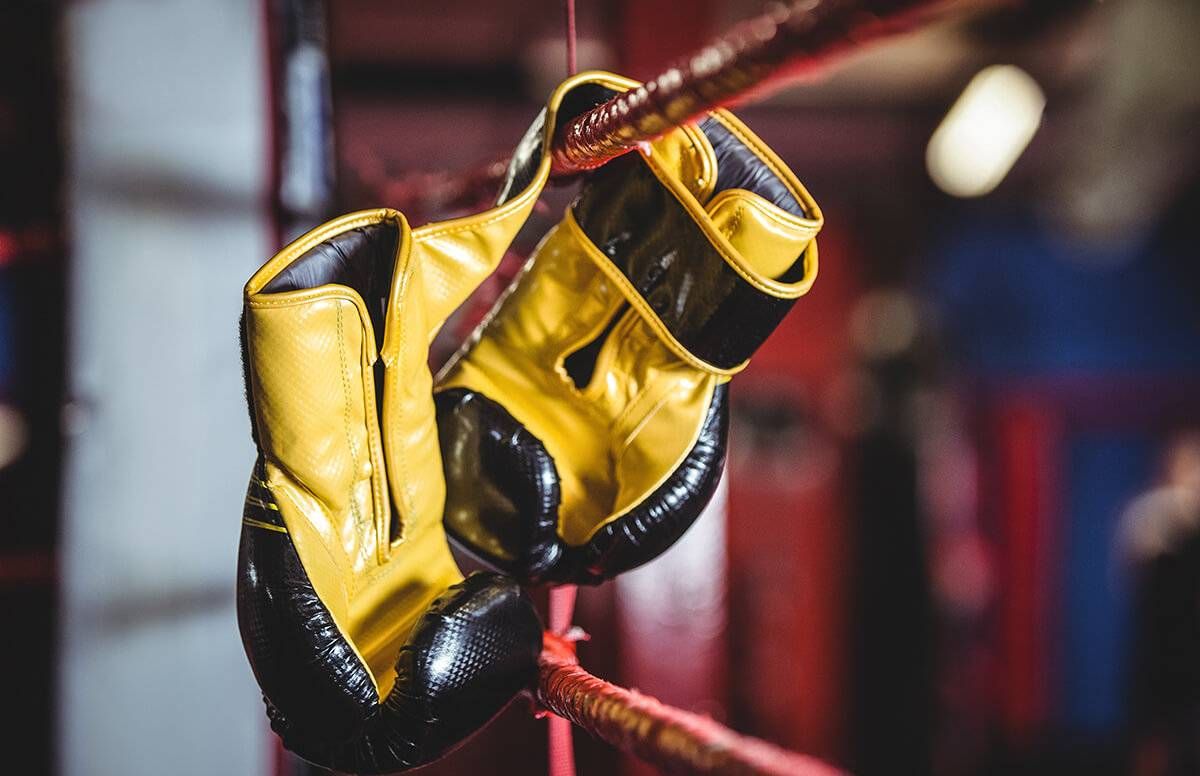Fitness Boxing: A Contender for a Great Workout
Get ready for cardio with benefits – including a brain boost
Twice a week, I wrap each hand, put on my boxing gloves and do my best to float like a butterfly, sting like a bee. At 65, I don’t spar in a ring or pursue competitive boxing. And I don’t want anyone punching me or risk physically hurting someone else. Instead, I practice fitness boxing, working with my personal trainer, Bishoy Gendy, punching out a 30-50 minute aerobic workout comprised of a seemingly endless number of combinations of jab-cross-hook-uppercut-weave.

My targets are the protective padded mitts (also called focus mitts) Bishoy wears as he calls out the combos, corrects my technique, urges me on. I typically clock in between 1,000 and 1,500 punches per session, without knocking anyone out — including myself. And when I finish, I feel the kind of cardio high that runners (like my husband) feel.
I first tried fitness boxing 3 1/2 years ago, courtesy of a free training session at my gym, which I signed up for out of curiosity. More than curious, actually: not only had I been a fan of Muhammad Ali, I also remembered all too well the many times, as a kid, when my two big brothers would beat me up, leaving me hurt and humiliated. I shouldn’t have been at all surprised by how empowering it felt to put on those gloves and learn how to hit those padded mitts Bishoy holds up as targets for me.
I’ve found fitness boxing a fantastic way to let go of stress and frustration — to expend that pent-up energy safely. As Ingrid Tarjan, a personal trainer and yoga instructor at Equinox in New York, put it, “When else do we have permission to hit something?”
The Challenge of Fitness Boxing
Fitness boxing comes with a learning curve. Throwing a punch, I discovered, isn’t about flailing your arms, but putting your entire body and breath into it, rotating your torso, pushing off from your feet, coordinating hands and body and brain all at once. I welcomed the challenge.
I had been looking for a cardio component to add to my strength-training routine, and in the complexity of fitness boxing, I found an activity that could keep my mind engaged in a way that the monotony of the treadmill, stationary bicycle or other machines never could. I think of my fitness boxing workouts as cardio with benefits — of the aerobic, strength and cognitive variety.
Those factors might also be contributing to fitness boxing’s renewed popularity. One example is the major investment Equinox made in Rumble, which focuses on boxing-inspired group fitness. Classes are 45 minutes in length; one class is $34 and multiple class packages are available. In recent years, a number of additional boxing gyms and chains have also opened around the country.
“Boxing has always been around, but I have noticed that more people are picking up boxing workouts and it seems to be coming back into vogue,” says Pete McCall, an American Council on Exercise-certified personal trainer based in San Diego, who has been coaching fitness boxing workouts for 15 years. “I think as people get tired of one type of exercise they go to another.” Many gyms also offer fitness boxing group classes.
Helping Mind and Body
Matt Natanson, an orthopedic clinical specialist and physical therapist at Boston’s Brigham and Women’s Hospital, cites a whole list of the ways in which fitness boxing can help mind and body:
- Engaging your whole body builds strength and flexibility.
- Having to focus on targeting a punch to land in the right spot helps eye-hand coordination.
- Keeping on your feet and moving around also helps balance and stability.
- Fitness boxing’s built-in resemblance to interval training — a few minutes of intense activity (in my training, up to about 300 or 400 punches), followed by a short break, and repeat — can yield additional pluses by preparing your body to expend a short burst of high intensity energy (to climb a steep set of stairs, for instance, or run to catch a bus) and then quickly recover.
For those among the 50-and-over set, McCall views the cognitive benefits as particularly important. “Learning something different, picking up a new activity, stretches the plasticity of your brain in new ways,” he said. So, taking in and practicing those new punching combinations and movements can create new neural pathways in the brain.
Putting Safety First
As with any physical activity, the key is doing it safely. If you’re just starting a fitness program for the first time, check in with your doctor. Most important, even before you don boxing gloves, make sure you wrap your hands (my washable hand wraps are bright pink) to protect the bones in your hands and your wrist from injury.
Learning proper technique is also essential, McCall said, because “if you’re not connecting properly you can injure a wrist, elbow or shoulder.” Even with proper technique, be careful. For instance, I stay away from my gym’s heavy hanging punching bag because, as my trainer warns me, it’s so solid and unyielding that it very well could cause strain or sprain or injury.
Natanson recommends that women over 50 talk to their doctors about osteoporosis or osteoarthritis concerns. Even though hand wraps and gloves provide padding, the constant impact of hitting may be too risky. “You have to be smart about listening to your body and any problem areas,” he said. After all, the goal is to get fit — not unintentionally knock yourself out.

